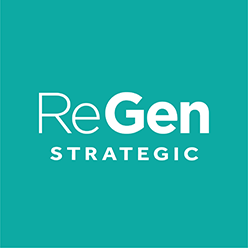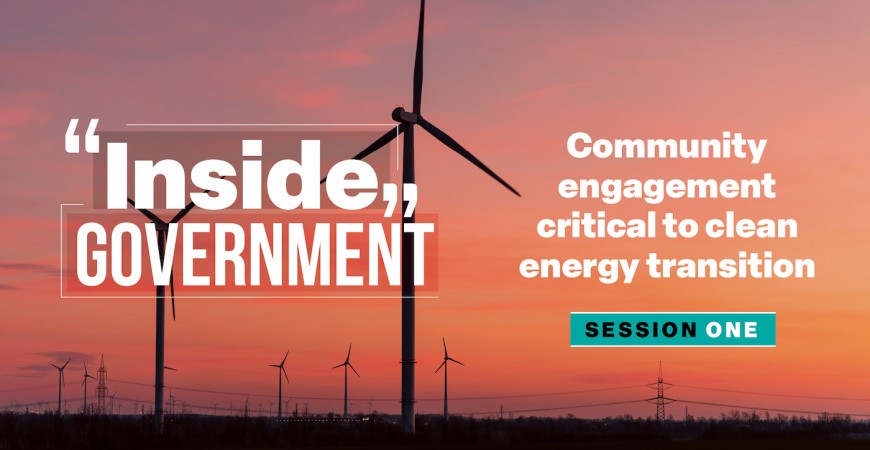Australia is embarking on an energy transition that will be as seismic as any change this country has seen since European colonisation.
The momentum that is being generated from development proposals, industry innovation and government policy is dizzying. This includes Western Australia, where new entrants are proposing to develop large-scale renewables capacity that can contribute to the export of green fuels and almost all existing businesses have some form of decarbonisation plan that will support the realisation of net zero emissions.
The size of projects to support green hydrogen and ammonia exports, such as the Western Green Energy Hub, will dwarf even the largest ‘traditional’ major capital projects that have supported WA’s economic growth in recent decades.
The scale of proposed renewable capacity, alongside the production of green fuels and battery storage, has the capacity to fundamentally shift not only the exports from WA, but also the ability to accelerate manufacturing and downstream processing.
Western Power’s project to bolster transmission from Perth’s northern suburbs to the Mid West will connect up to 1 gigawatt of renewable energy from one of the most optimal wind and solar energy regions on the planet. This will reduce up to 2.4 million tonnes of carbon emissions every year, as well as provide cheap and reliable energy for the industries that will drive sustainable economic growth.
The WA Government will spend billions of dollars to decarbonise the electricity grid, however even this will be dwarfed by the tens of millions of solar panels, tens of thousands of wind turbines and thousands of kilometres of transmission lines that will be built with inflows of private investment over the coming decades.
In time, it is envisioned that plummeting input costs for energy can offset input costs for labour, which rightly reflect inbuilt wage structures and high standards of living.
But perspectives on the energy transition will likely differ depending on your proximity to these changes. An urban, climate conscious 30-something is probably eager to see the rapid roll-out of renewables. But a 50-something farmer is perhaps less keen on the thought of a transmission corridor running through their paddocks, particularly if they are up to their eyeballs managing harvests, fire risks and the increasing costs of agricultural supplies.
AEIC recommendations
The Commonwealth Government has accepted recommendations by the Australian Energy Infrastructure Commissioner (AEIC), who undertook a review of community engagement expectations and experiences associated with the energy transition.
This review continues the refrain from the Commonwealth Government about the necessity – and inevitability - of this national transformation.
This was not a consideration of whether the energy transition should occur. Coal-fired generation assets will be replaced and a decentralisation of the energy grid will occur. The review and recommendations are about bringing the community on the journey and ensuring that the transition can occur in the timeline necessary to help Australia contribute to the global effort to avoid the worst impacts of climate change.
If Australia’s share of renewable energy generation is to increase from 32 per cent in 2022 to 82 per cent in 2030, as is being pursued by the Albanese Government, there is a pressing need for proponents to engage communities as soon as possible.
Australia’s energy revolution is here and now – and this revolution will be televised.
Throughout the summer, ABC’s Jane Norman has highlighted the various impacts and perspectives shouldered by regional communities during the early stage of the energy transition, particularly as the footprint of large-scale renewables proposals and transmission towers in Renewable Energy Zones (REZs) start to be better understood.
As expected, there are sections of these communities that cannot readily contemplate the threat of more native vegetation loss or impacts to visual amenity across landscapes that have not had significant change since widespread conversion to agricultural land. And, these genuine interests are sometimes augmented by the political posturing of some.
However, there are also local mayors and civic leaders who see the long-term benefits of hosting clean energy infrastructure developments and can identify ways to progress their planning in a manner that generates a dividend for their communities.
Tracking results
The AEIC has recommended a rating scheme for renewable energy developers, extending to contractors and consultants, to guide proponents and assist in the evaluation of tender responses. Achieving best practice in community engagement will be critical to being trusted to deliver new project developments, making the professionals tasked with overseeing or delivering community engagement just as important as technical, finance and other members of the project team.
The veracity of stakeholder and community engagement needs to be shifted from a compliance exercise to something that is genuinely inquisitive and consultative, in order to capture the myriad of views that may exist. The only way to do this effectively is to start early and provide sufficient resources.
Local community engagement
The AEIC also recommended that communications to impacted communities need fundamental change. This needs to include not only the direct linkage to the project in the immediate vicinity, but also the way in which the project is contributing to local, national and global efforts to decarbonise.
For those attempting to work with local communities collaboratively, the recommendations for sustainable benefit sharing stands out.
There are an immense array of projects that seek to partner with communities. Local content, skills training, First Nations equity models and social infrastructure commitments can make a substantial contribution to the ownership of large-scale projects by regional communities. More favourable and permanent arrangements will be viewed favourably by governments at all levels, who are already stretched to provide the expected services throughout regional Australia.
ReGen Strategic’s Community Engagement services always start with long-term objectives in mind. Rather than asking ‘why are we engaging the community’ (which can often be a proxy for “why do we have to engage the community”), it should be reconfigured as “why do we want to pursue this development”. This change in mindset can help to move from short-term thinking and emotive responses.
Blanket acceptance or a uniform view is very rarely achieved across a community, so it is incumbent on governments and private proponents to expect opposition and heated debate. It is often at these moments where greater clarity or a more tailored solution can come to light.
Like any societal change or economic transformation, there are always going to be sections of the community that will be more heavily impacted than others. These impacts may be confronting in the short-term. For some, they may seem a long way off. For others, the prospect of a cleaner and more sustainable future warrants the difficult decisions that need to be made right now.
If the energy transition can be done ‘with’ impacted communities, rather than ‘to’ impacted communities, additional, lasting benefits can be delivered for future generations as well.
 ReGen Strategic
ReGen Strategic